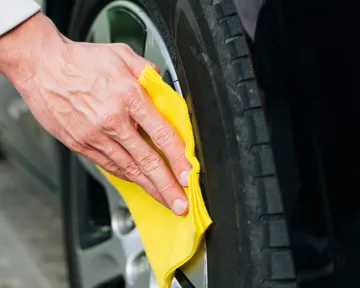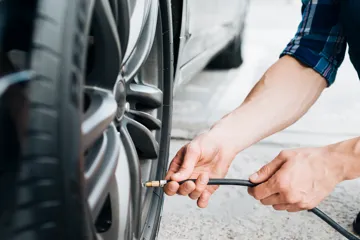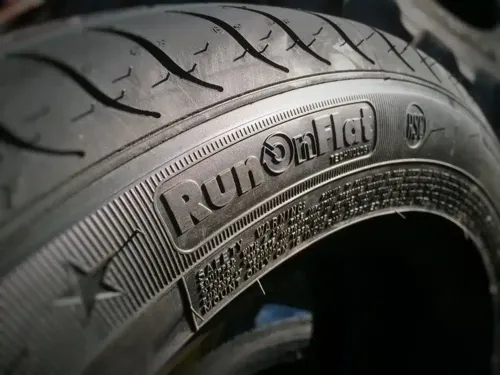Tyre Maintenance Tips for Long-Lasting Tyres
Keep your tyres in top condition with these essential tyre maintenance tips.
Posted on

Your tyres play a critical role in the safety, performance, and efficiency of your vehicle. Properly maintained tyres not only improve fuel economy and handling but also extend the lifespan of the tyres themselves. Regular tyre maintenance is essential to ensure you get the most out of your tyres and stay safe on the road. In this post, we'll explore essential tyre maintenance tips to help your tyres last longer.
1. Rotate Your Tyres
Tyre rotation is one of the most effective ways to extend the life of your tyres. Front and rear tyres wear differently due to the various loads and forces they experience. By rotating your tyres, you help ensure they wear more evenly over time, which can significantly extend their lifespan.
Here’s how to manage tyre rotation:
- Rotate your tyres every 6,000 to 8,000 miles or as recommended by your vehicle manufacturer.
- Rotate them in a pattern that ensures even wear across all four tyres (such as moving the rear tyres to the front and switching the front tyres diagonally to the back).
Regular tyre rotation helps prevent uneven wear and maximizes the life of your tyres, saving you money in the long run.
2. Monitor Tread Depth
Your tyre's tread depth is critical to maintaining traction on the road, especially in wet conditions. As the tread wears down, your tyres lose their ability to grip the road effectively, which can lead to hydroplaning and poor handling. It’s important to check your tread depth regularly to ensure it’s within the safe range.
You can easily check tread depth using:
- The penny test: Insert a penny into the tread groove with Lincoln’s head facing down. If you can see the top of his head, your tread depth is less than 2/32 of an inch, and it’s time to replace the tyres.
- Tread depth gauge: A more precise tool that allows you to measure the exact depth of your tread.
In most places, the legal minimum tread depth is 1.6mm, but many experts recommend replacing your tyres when they reach 3mm for better safety and performance.
3. Balance and Align Your Tyres
Tyre balancing and alignment are crucial to maintaining even tyre wear and ensuring a smooth ride. Misaligned or unbalanced tyres can cause uneven wear, reduce fuel efficiency, and make your car harder to handle.
- Wheel alignment: If your vehicle pulls to one side or your steering wheel vibrates, it may be time to have your wheels aligned. Alignment ensures that your tyres make full contact with the road, reducing wear and improving handling.
- Tyre balancing: Imbalanced tyres cause uneven wear and vibrations. Have your tyres balanced every time you rotate them or notice any unusual vibrations while driving.
Regular alignment and balancing keep your tyres in good condition and improve your overall driving experience.
4. Check Tyre Pressure Regularly

Maintaining the correct tyre pressure is one of the simplest yet most effective ways to extend tyre life. Under-inflated or over-inflated tyres wear unevenly, which can lead to premature wear and even tyre failure. Additionally, improperly inflated tyres can affect fuel efficiency and vehicle handling.
To keep your tyres in good condition:
- Check tyre pressure at least once a month and before long trips.
- Refer to your vehicle’s owner’s manual or the sticker inside the driver’s door for the recommended pressure level.
- Use a reliable tyre pressure gauge to check the pressure, and make adjustments as necessary.
- Remember that tyre pressure fluctuates with temperature, so check it more frequently during temperature changes.
5. Inspect for Damage Regularly
Your tyres are constantly in contact with the road, making them susceptible to damage from debris, potholes, and other hazards. Regularly inspecting your tyres can help you identify potential issues before they become serious problems.
Here’s what to look for:
- Cracks or bulges: Cracks in the sidewall or bulges in the tyre could indicate damage to the internal structure, which can lead to blowouts. If you notice these, replace the tyre immediately.
- Objects embedded in the tyre: Sharp objects like nails or glass can puncture your tyre. If you spot any objects, have your tyre checked to see if it can be repaired or needs replacing.
Inspecting your tyres for visible damage helps you stay proactive and prevent accidents or blowouts on the road.
6. Avoid Overloading Your Vehicle
Every tyre has a load index, which indicates the maximum weight it can safely carry. Overloading your vehicle puts excessive strain on the tyres, causing them to wear out faster and increasing the risk of a blowout.
To avoid overloading your tyres:
- Check the load capacity on your tyre’s sidewall or in your vehicle’s manual.
- Avoid carrying more weight than your vehicle is rated for, especially during long trips or when driving in hot weather.
Properly managing the load on your tyres ensures they wear evenly and don’t experience unnecessary stress.
7. Avoid Harsh Driving Habits
The way you drive directly impacts the lifespan of your tyres. Aggressive driving habits, such as sudden braking, rapid acceleration, and sharp cornering, can cause your tyres to wear unevenly and prematurely.
Here’s how to drive more tyre-friendly:
- Accelerate and brake smoothly to avoid unnecessary strain on your tyres.
- Take turns gently, as sharp cornering can cause uneven wear on the edges of your tyres.
- Avoid driving over potholes or curbs whenever possible.
Driving gently not only helps your tyres last longer but also improves fuel efficiency and vehicle performance.
8. Store Tyres Properly When Not in Use
If you use seasonal tyres (such as winter or summer tyres), proper storage during the off-season is important to maintain their quality and lifespan. Improper storage can cause the rubber to degrade, shortening the life of your tyres.
To store your tyres properly:
- Clean them thoroughly to remove dirt, debris, and brake dust.
- Store them in a cool, dry place away from direct sunlight, as heat and UV rays can damage the rubber.
- If possible, store tyres upright rather than stacking them, to avoid pressure on the sidewalls.
By properly storing your tyres, you’ll help maintain their condition and ensure they’re ready for use when the season changes.
9. Choose the Right Tyres for Your Vehicle
Ensuring that you have the right tyres for your vehicle and driving conditions plays a major role in tyre longevity. Using tyres that are not suited for your vehicle, climate, or driving habits can lead to faster wear and reduced performance.
- Consult your vehicle’s manual for recommended tyre specifications, such as size, speed rating, and load capacity.
- Choose the right tyre type for your driving conditions. For example, use winter tyres in cold, icy conditions and summer tyres for warm, dry conditions.
For more information on choosing the right tyres for your vehicle, read our blog post on How to choose the right tyres for your vehicle?
Conclusion
Maintaining your tyres properly is key to extending their lifespan and ensuring a safe, comfortable driving experience. Regularly rotating tyres, balancing and aligning them, checking tyre pressure, and practicing careful driving can go a long way in keeping your tyres in top condition. By following these simple tyre maintenance tips, you can improve tyre performance, reduce the risk of accidents, and save money by avoiding premature replacements.
Investing time in tyre maintenance is a small price to pay for the added safety and durability it provides. Keep your tyres in good shape, and they’ll keep you safely on the road for many miles to come.









